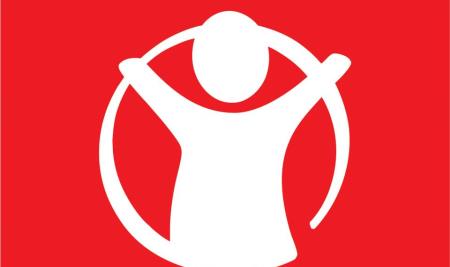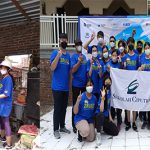By Grade 11: Michelle Harli, Sabrina, Alvin
Our Entrepreneurship activity involved creating a new business, selling bento boxes. We set up two different menus each time we cooked, but we were open to suggestions and requests. We cooked the food by ourselves in one of our members houses, along with decorating the bento set. Apart from our bento box menu, we provided a healthier alternative menu, a fruit cup. We created an Instagram online media display to show the menu and price list so customers could select their menus beforehand and pre-order the food they wanted. All the food had to be halal because the majority of the customers were Moslem and we tried to sell our products to as many people as possible.
We were aware that people have different tastes and some people could be allergic to certain types of fruits, so we decided that we would let customers choose the fruit for their fruit cups themselves during the preorder session. We only accepted cash payment. Our Instagram page showed the available menus and promotions as well as discounts.
Every weekend, we cooked the food for the bento boxes, stored it in the fridge and heated it before we left for school on Monday. Our business acted more as a catering business as we did not sell at school to ensure that canteen sales were not affected. We sold each bento box for about Rp.20,000 to 25,000 per box, Rp.10,000 for each fruit cup. Our purpose for doing this was to engage with issues of global significance, in this case, Syrian refugees. We ended up sending US$258.68 to an NGO called Save the Children.
Here it is, the 5-element entrepreneurship process
A. Investigating
Vision: To contribute to people in need all over the world
Mission: To raise funds for donation through selling healthy food.
Objective: A profit of at the very least Rp. 2,000,000 by the end of 6 months to donate
We decided to meet up in my house where we decided to cook salted egg, chicken and prawn. This was a little different to our other menus because we realized that our past menus had too few components so we wanted to maximize the amount of things we had. So we had 3 pieces of chicken and 2 prawns instead of just 3 chicken pieces like in the curry. We felt that it wasn’t right to take too much profit from people even though it was for charity. We also felt like we wanted to increase our product quality so we bought extra ingredients to make the salted egg taste better like curry leaves and evaporated milk.
B. Planning
Before beginning we delegated the jobs. Alvin would take care of printing the stickers and washing the bento boxes. Sabrina would make the business cards and I would take care of the groceries and preparation. We priced each bento box at about Rp.20,000 to 25,000, and Rp.10,000 for each fruit cup. Therefore our business was more like a catering service, as we were not selling it at school, which meant the canteen’s sales wouldn’t be disturbed.
C. Taking action
The cooking process took about 3 hours. Alvin and I first started washing the bento boxes and also cutting the chicken and egg and coating it with egg and flour. We left it there first and started working on the sauce by boiling the salted egg and mushing it into pieces so it would fry better. After that was done we just simply fried it in butter and olive oil with some curry leaves and waited for it to make foam. After that, we cooked it with the fried chicken and shrimp.
We met up on Sunday to prep for the meals. This included buying the ingredients and seasoning them. The first thing we did on that day was to delegate tasks. Mostly, Sabrina’s job was cooking and Alvin and I were in charge of preparation. So on that day, the first thing we all did was make sure that the utensils we provided were clean, so we washed them. After that was done I washed the chicken, prepared the seasoning for it and put batter on it by first dipping it in flour and egg and lastly the breadcrumbs. After that was done, we just needed to fry it. So that was left for a while. Then we also prepped for our second menu, the omurice, by cutting the sausages octopus style, peeling and chopping the carrots and also cutting the garlic.
After the preparation of the fried rice was done we moved on and worked on the curry because that was our first menu, chicken katsu curry. So we used the left over carrots and potatoes for the curry sauce and because it was instant all we needed to do was just boil the water and add the curry sauce into it. After the preparation was done, we helped a bit by frying some of the chicken while Sabrina did the fried rice. Following that, I started plating it and dividing the chicken pieces into equal proportions so everybody had similar amounts of chicken. Then we just distributed the curry sauce and rice as equally as possible.
D. Marketing
We created an Instagram page and used online media to display the menu and the price list, so customers could select their dishes beforehand and pre-order the food they desired. Our Instagram page was not only used to show the available menus, we also used this site to announce promotions (e.g. discounts).
We decided to make some marketing schemes to get some people involved and give back to our customers. We came up with something similar to a quickly card. So it’s a card that allows people to get a discount depending on how many times they buy. The card was designed by Alvin and printed by Sabrina
E. Reflecting
Overall, I was extremely happy with the results. We were able to demonstrate all 7 outcomes through this project.
- Identify own strengths and develop areas for growth – throughout the process, being a “cook” as well as a promoter. I was able to identify my own strengths and develop areas for growth. An example of this is that at first I was able to identify my strength which was promoting the food, asking everyone I know whether they would like to support us. However, I did realize that I had other areas that I didn’t do so well in, at first for example, cooking, but now I am able to do a lot more, like seasoning and cooking chicken etc.
- Demonstrate that challenges have been undertaken, developing new skills in the process: The first challenge was definitely to establish a customer base, however over time we were able to get about 8 regular buyers, which was pretty good. New skills that we learnt were communication (business-wise) and for me cooking.
- Demonstrate how to initiate and plan: We initiated this project as we are very interested in business and the planning of events.
- Show commitment to and perseverance: building a very small non-profit organization is not easy. Especially one that is food-related. We spent at least 3 hours on a weekend cooking and an hour on the weekday distributing food.
- Demonstrate the skills and recognize the benefits of working collaboratively: This is especially applicable for our case, especially in cooking. Cooking requires a lot of steps, working collaboratively means that there would be less time needed to finish the meals.
- Demonstrate engagement with issues of global significance: we engaged with an issue of global significance, which was the Syrian refugee crisis. We ended up sending US$ 258.68 to an NGO called Save the Children.
- Recognize and consider the ethics of choices and actions: Throughout our cooking we always tried to think of the ethics of choices. We know that the majority of the people in our school are Muslim, thus we never cooked with pork. Furthermore, we always cleaned the lids and everything else to make sure they were clean.








